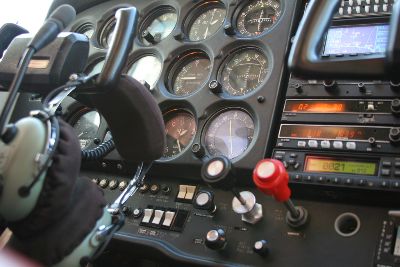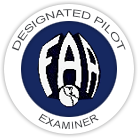No matter how we try to settle ourselves down on the day of our checkride, there is no denying it’s a big day! It is normal to be a bit nervous. And, due to nerves or just a bad day, there will be a few mistakes during the checkride. As I often say, we just need to avoid the big mistakes.
Fortunately, aviation is the ultimate “learn from others” arena. Regardless of our level of experience or type of pilot certificate we hold, pilots are always students of aviation. We are constantly briefing, debriefing, asking questions, and learning from others. A checkride represents that final test to accomplish what we’ve been working towards. We want to do it right. And, if we can have a little insight to what others have done right or more importantly done wrong, we can possibly gain some knowledge and confidence heading into the all important checkride.
I have listed the top 5 common mistakes during a checkride. Keep in mind, these are the most common mistakes I have seen while conducting various checkrides for different certificates or ratings. After listing the task or maneuver, I reference the type of checkride the mistake was observed to provide some relevance to the error. So in no particular order, let’s take a look at what I have observed are the most common mistakes:
- Traffic pattern procedures (Private Pilot): After completing the required air work (or maneuvers), the applicant has to return to the airport of departure or in some cases a nearby airport to complete the takeoff and landings. Many times, the pilot loses situational awareness while returning, and most commonly enters the pattern for the wrong runway. Whether assigned by the tower or more commonly returning to an uncontrolled airport, entering the pattern incorrectly against the flow of traffic is never good.
- Short Field Takeoffs (Private/Commercial): The short field takeoff is required to be demonstrated on both a private and commercial checkride. As the PTS outlines, there are specific tasks within this performance takeoff that must be completed. Believe it or not, the one item that is typically overlooked is using all available runway for the takeoff roll. I see various versions on this mistake. Some pilots completely forget to taxi to a position that would utilize all available runway, while others make a “half-hearted” attempt and still leave the usable pavement behind them. Take full advantage of the runway available when performing the short field takeoff. Once you add the power and release the brakes, you can never get back the runway behind you!
- Holding Pattern Procedures (Instrument Rating): Without question, one of the most difficult tasks in flying is single pilot IFR flying. When we throw in some nerves the day of your checkride, the workload can certainly get the better of even the most skilled instrument pilot. Holding may seem to be a straight forward procedure in instrument flying, but many applicants lose orientation when approaching the holding fix and turn the wrong direction. Additionally, the applicant enters the holding pattern correctly but then makes the wrong turn upon reaching the fix inbound after the entry. Altitude must be maintained during this procedure. While confirming what the next turn will be, the instrument scan is lost. There is an excessive deviation from assigned altitude.
- Short Field Landings (Private): The short field landing can be challenging. Many have heard that a good landing begins with a good approach. This advice is certainly true for the short field landing (or any performance landings for that matter). Many applicants begin with a close in turn to base resulting in being high on final or a shorter final segment allowing little time to get the aircraft configured and stable. The most common outcome that is unsatisfactory is overshooting the intended touchdown spot. This overshoot is usually a result of excessive speed or trying to make a soft landing with a last second flare causing the aircraft to float beyond the allowed distance (within 200’).
- Emergency Approach and Landing (Simulated) (Private/Commercial): The simulated engine out approach and landing is common area where mistakes are made by the applicant. This maneuver incorporates so many skills from our training. It is an excellent demonstration by the applicant for the examiner to see many skills all pulled together. The most commonly observed errors when simulating an engine out are lack of establishing best glide airspeed, and selecting a suitable landing area. As soon as the engine has a loss of power, best glide airspeed must be established. Many applicants fail to utilize pitch trim to assist in maintaining this speed and reduce their workload. When choosing a suitable landing site, a common error is disregarding hazards such as power lines or a tree line in the way. Additionally, every effort should be made to land into the wind. Always be aware of the surface winds below you. By landing into the wind, our groundspeed will be greatly reduced increasing our chances for a successful outcome.


